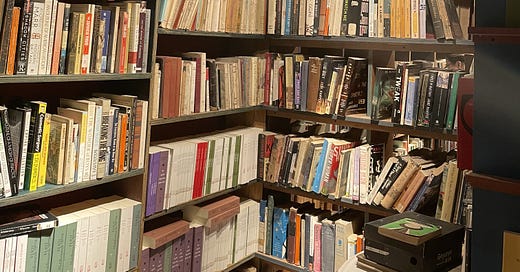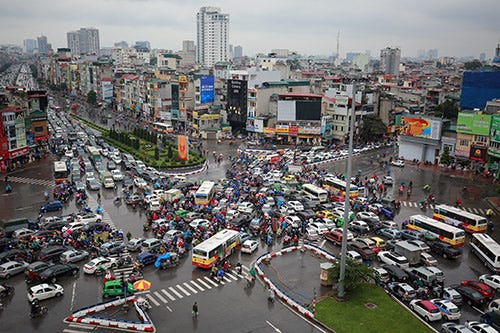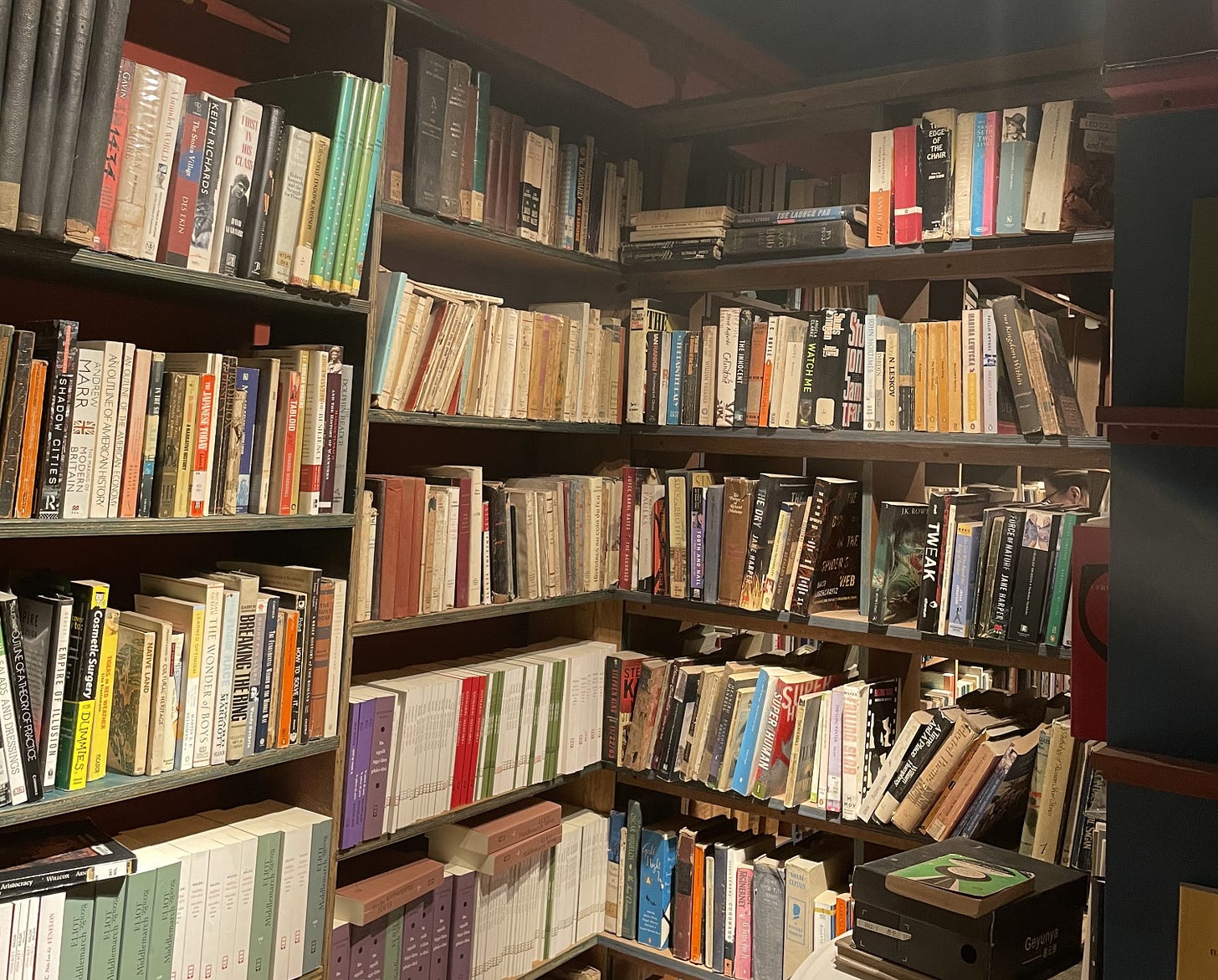The anatomy of a city: Hanoi (Part 2)
Having taken a good look at Hanoi, I proceed to describe their manners, habits, and lifestyle.
III. Hanoi’s manners
When one first meets Hanoi, their manner seems paradoxical, as if there are two individuals under the same designation. Hanoi runs at a bizarre pace, which is simultaneously too rushed and too relaxed.
The moment you get on the street, you are greeted with a hostile deluge of traffic. This traffic terrorized tourists: they didn’t think possible for a city traffic to be so hostile and uncaring. People inch forward on their motorbikes, filling every vacant space on the road like a thick viscous liquid. If you are a tourist, you might know the experience of being on the rear seat of a Hanoi Grab-bike (or your favorite ride-hailing equivalent). These drivers are almost scarily efficient at the expense of others; they weave through traffic deftly, honk instinctively in a tribal display of dominance, pay the red traffic lights no more than a sidelong glance before confidently running them. All of this is done not with a sudden outburst of adrenaline but of a steel-willed, martial-arts-trained resolution of attitude, it is a discipline to be perfected rather than an impromptu disregard for the law of a singular individual. When I rode a motorbike by myself, unable to conform to this discipline, I feel an air of inferiority, of disrespect for the status quo; there was a peer pressure forcing me to be as harsh. Admittedly, being quite weak-spirited, I never enjoyed the sensation1.
Crazy traffic is not peculiar to Hanoi, one can expect similar frustrations in any other metropolitan city. Yet this particular craziness feels encouraged by design. The most infamous example is that of an impossibly convoluted traffic junction in O Cho Dua. Like, a population of the most law-abiding, calm and altruistic would be irreversibly corrupted by the nefariousness of this place.
However, the hurried, almost frenetic pace one experiences on the street suddenly vanished once one set foot in a building. Life slows down as if one just walked into a viscous gel; we are enveloped in a profound aura of dreamy meditation. The contrast is surreal. I step into a cafe whose doors open with a slight creak, the barista greeting me in an amiable and delicate voice; I settle down and cozies myself in a haven, already forgetting the harrowing honks of two minutes ago.
Coffee culture is probably the singular most definitive aspect of Hanoi’s calmer side. When a foreign friend asks me what they should do in Hanoi, I would invariably suggest them to go to one of the local cafes. People in Hanoi in general loves their coffee, as evidenced by the rise of artisans cafes recently. However, even someone who never drinks coffee out of free will in Singapore like me gets enthralled by the cafes of Hanoi. Coffee culture extends further than the drink itself, it becomes a lifestyle; the question “Wanna get coffee?” is synonymous with “wanna hang?”; cafes become the default destination when you want to meet up with an old friend. The coffee culture is not a new product of the hippie youth as with other cities: you will see traditional coffee shops in which older folks gather for a chill morning, shelving their thoughts in favor of a Chinese chess match.
The cafes of Hanoi (the nicer ones, at least) are usually tucked elegantly inside some crevices, unassuming from the outside. Once we walked inside those crevices, temporarily, we are sheltered from the outer world; people would spend half a day or even more in these hideouts. Some youngsters take out a laptop, finishing their coursework; others take out a book or chat with their company. For the elder folks, they sit down on stools, chat with their old friends or colleagues, casually taking a dose of tobacco. Some cafes are the closest thing we have to a library. Not purely for the fact that some cafes have books everywhere, but for the fact that they allow you to exist in a hideout without the pressures of the outer world, unremarked by the advances of capitalism (you do have to pay for the coffee, of course, but you can basically linger all day with one coffee purchase, so the monetary concerns for having a place to be in fades away). One sits down on a cozy balcony at noon, and when dusk descends, still finds some excuses to prolong their stay.
I realized life in Hanoi is rather compartmentalized. Since I live and breathe Hanoi in these small hideouts, like creases on their lapel, ruffles on their sleeve, I rarely, and am rather unwilling to, witness the vastness of Hanoi. The endless urban sprawl of roads connecting these little gems becomes homogeneous, and therefore forgettable. Although an average Hanoian spends a few hours a day on these impossibly lawless and congested streets, memories of them fade as soon as we tuck ourselves in a cosy shelter. The city lives on in these small, lively spots, true to their spirit of being someone absurdly obsessed with details, yet hopelessly neglectful of the broader strokes. The way they speak loudly, fidget relentlessly, eyes nervously skirting the dining hall, are superficial - they are not untruthful, but they are misleading. These crass manners are betrayed by certain gestures which are by themselves discreet, but which repeat often enough to suggest a different, more relaxed and aesthetic nature of manners underneath, like s slight sentimental inflection in their voice or a certain distractedness of the eye.
I doubt Hanoi is even aware of this duplicity of manners. It would be erroneous to think of Hanoi as a shy person, who, too well aware of their inner sentimentality, learned to put on a mask of frenzy and impoliteness. Even if that was originally the case, Hanoi has rehearsed it so well that now both mannerisms come as completely natural. Knowing Hanoi’s camp affinity and love for imperfections and contradictions, they might has well embraced this duplicity unconsciously, and if anyone dares to question them on that, they would reply “Oh, I’m surprised that you are surprised, that’s just how I am, you know me”, oblivious to the fact that the two manners appear paradoxical on the surface.
And I certainly don’t claim the slow, ponderous Hanoi is the true one, and the cacophonous, frenzied Hanoi a counterfeit - that would be to impose too much of my personal bias. Both Hanois are authentic. Hanoi is just very sensitive to its surroundings, so they will adapt like a chameleon to show you the mannerisms they feel more apt for a particular conversation. I discovered this through talking to my friends in Hanoi: those that just come to Hanoi purely for studying or business feel that the city is grating and unbearable, while those coming less often and for more poetic purposes (me included) feel that the city is rather sensitive and lazy.
IV. Hanoi’s lifestyle
The lifestyle of Hanoi is fueled by their anarchist tendencies and its camp eye: everything they do borders on theatrical and impulsiveness, sometimes deliberately controversial. We saw its penchant for chaos in the way they organizes traffic. One imagines that Hanoi would live life in the exact chaos one experiences as one crosses the road here: with hostile vehicles dashing with their glaring lights, one must defiantly march forward, and then through a miraculous social contract, traffic dissipates around one like water did for Moses. To follow Hanoi on their adventures feels the same as following a local crossing the road for the first time: I heard an acknowledgement of the ridiculousness of the state of affairs, combined with a hearty laugh subverting absurdity into joy; I caught a wink of the eye and faked my confidence to dash through the traffic, bracing myself in terror, but to my amazement, I survived2.
Tourists say the learning to cross the traffic was a ritual of initiation, and they are not wrong. After the initial bout of queasiness, Hanoi's adventures become much more exciting. Hanoi will take you dining in a shabby roadside stall, where ominous stains on the pavement raises hygienic alarms and where tissues on the floor is more of a feature than a bug. Or it will take you to the famous Train Street (mentioned in the previous post), putting you head to head with an incoming train. Or it will get you an elder, grumpy shop owner who only after you endured enough to be a regular will open up to you about their experiences3. Hanoi’s lifestyle is full of pleasures hidden under unpleasantness. In this respect, the city seems like a rather disagreeable sadist: they seem to hold the pleasures they enjoy in high regard, and consequently seek to gatekeep through shielding them behind a ritual of initiation. Many people, tourists and Hanoi locals included, can never get past this sadistic inclination; therefore, Hanoi to them would forever be a self-important wretch whose life is overflown with displeasures.

Although Hanoi prefers to be enigmatic in their pleasures, they wear their affinity for culture on their sleeves. To witness this spirit, one only has to come back to Hanoi’s innumerable cafes. In these cafes, I saw one reading Hayek, one reading Proust, and a friend group taking their guitar out on a balcony, meanderingly humming the latest indie tunes. Lots of cafes have their own treasure trove of books. The cosy corners of Hanoi foster an intimate, yet lively atmosphere for gatherings.
The structure of Hanoi lends itself readily to the artist. Hanoi looks like an artist, messy and vainly concerned about their presentation; Hanoi acts like an artist, alternating bewilderingly between being loudly impolite and lazily tranquil; it only makes sense that Hanoi lives like an artist. The city seems to be enjoying their Bohemianism; maybe through inheriting the French’s architecture and culture, it also inherited their spirit.
The art scene of Hanoi is wonderful. Close to my heart is a venue named Hanoi Rock City, which is the undisputed home of Hanoi’s alternative music acts, both local and foreign. Here in Hanoi I got enthralled by the brimming music scene, and I become convinced in the creativity that fuels our local music - previously, I was just skimming on the surface, regarding the good Vietnamese songs I hear as a touch of serendipity rather than a flowering of a well-endowed, evergreen musical tree. The sounds of Hanoi are diverse, spontaneous, and surprising. The city’s anarchist atmosphere has fostered a brimming, virile art scene whose development is organic, unpredictable, and untamed - to me, this is the essence of Hanoi’s art spirit4. It is the spirit that manifests when one hears a disembodied voice singing in the middle of town, the spirit that reminds us that the city will continue singing even after all its materiality disappears.
Hanoi’s sadistic, gatekeepy and Bohemian lifestyle feels so intriguing, yet so natural and intrinsic to the human-city that I have a hard time envisioning how the city will change in the future: maybe the city will forever stay the same, stuck in a whirlwind of confused, directionless activities, brimming with life yet clueless as to where to channel that energy. Unlike certain cities who have changed so much in the last few years I visited them, Hanoi seems stuck in time, a preserved specimen of the moment, a reference system against which other cities can be measured.
At this point, I had to bid goodbye to Hanoi because they’re again on to some mischievous endeavor. This sketch we have so far, however, hopefully could provide the readers with the barest outline of a human-city, one that is multifaceted but at the same time not too obsessive with details. One day in the future, maybe I will return again, to observe Hanoi in society, walking through life with their friends, family, and lovers. For now though, this simple portrait will have to suffice.
I attribute this to the characteristics of Hanoi, because I am far from inherently hating riding motorbikes, as we shall see in my portrait of Haiphong
Technically my first road crossing experience was in Haiphong when I was small. However, while it was scary, Hanoi is such a different beast that it worried me even after years of crossing the roads. In writing this passage, I pay respects to foreign tourists, who, acquainted with lawful traffic as they are, managed to cross the road this way the first time.
A favorite example of mine is “bún chửi”, a vermicelli stall famous for the fact that they serve customers in an extremely rude manner - customer service who? The mere fact that such a thing can exist is already absurd.
Compared to Singapore for example, which has a dazzling art scene but which is much more curated and tamed (more to follow later).






Tips from a local: Don't fear those who honk, fear those who don't ☝️